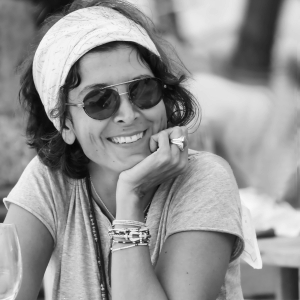Virginie ELLIS
Virginie Ellis is a fine art photographer who views the world as a visual poem. For her, photography is a meditative act where stillness and emotion converge, and presence becomes a form of prayer. Deeply connected to nature since childhood, she draws inspiration from the quiet rhythm of the natural world. Her images lie at the intersection of abstraction, reality, and storytelling—offering not just moments but contemplative invitations to observe more deeply, slow down, and enter spaces of stillness, resonance, and introspection.
The timeless influence of photographic masters and modern painters shapes Virginie’s visual language. The shadows of Brassaï, the precision of Kertész, the elegant light of Fan Ho, and the emotive colour of Ernst Haas all inform her way of seeing. Steve McCurry’s humanistic storytelling contributes a depth of feeling that resonates throughout her work. From the art world, she draws inspiration from the bold abstraction of Nicolas de Staël, the joyful palette of Matisse, and the poetic balance found in Paul Klee.
Her photographs emerge through a process of quiet observation and thoughtful composition. She uses the camera to explore tone, texture, and form—seeking harmony between structure and softness. Colour, when present, is gentle and purposeful. Space is intentional. Her work does not impose emotion; it invites it. Each image allows room for the viewer’s own reflection and interpretation. With a refined sensitivity to light and mood, Virginie crafts images that transcend the subject and become visual meditations—poetic, restrained, and quietly powerful. Her influences are evident, but always filtered through her own voice: lyrical, modern, and deeply contemplative.


In recent years, the Emirati desert has become central to Virginie Ellis’s practice. More than a landscape, it is a living spiritual presence, a place of stillness, light, and elemental memory. She approaches the desert not as a vast emptiness but as a resonant mirror, capable of reflecting our inner world’s fragility and quiet mystery. Her ongoing desert series is rooted in a deep emotional connection to the land, where each dune, shadow, and horizon becomes part of a larger visual language.
In this work, silence is not absence; it is voice. Light sculpts the sand like breath, and the ever-shifting forms of the desert become metaphors for time, impermanence, and solitude. Through restrained colour and refined composition, Virginie draws out the soul of the terrain, honouring its stillness and complexity. She captures the desert as a place of reverence, where the visual becomes spiritual. As in ancient Arabic poetry, the desert in her imagery is not a void but a place of profound listening. It is here that Virginie’s poetic sensibility is most clearly seen, where each photograph offers a moment to pause, feel, and hear oneself again.
Virginie Ellis approaches photography as a form of meditation and quiet presence. She does not seek to document reality but to distil emotion, light, and stillness into refined visual form. Each image invites the viewer to pause, reflect, and engage with subtle beauty. Guided by tone, texture, and atmosphere, her compositions are restrained yet deeply expressive.
Her photographs offer softness with structure and clarity with feeling. Colour is used sparingly and with intention. Every element is composed with care, allowing space for emotional resonance. Her process is intuitive, shaped by a sensitivity to place and moment.
This philosophy is most clearly expressed in her desert series, where the landscape becomes a mirror for the inner world. The silence of the dunes, the shifting light, and the sense of suspended time all shape her work. Virginie captures the desert not as emptiness but as a living presence—quiet, spiritual, and reflective. In this space, nature and emotion converge. Her photographs become sanctuaries of stillness, where the act of seeing is transformed into a quiet conversation with the self.
